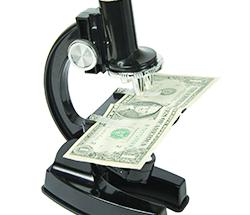13.04.2018 - Studies

Why is the US dollar so weak? After all, a similar policy-mix of a tax reform and monetary tightening by the Fed at the beginning of the 1980s led to a 40-percent appreciation of the US currency.
At the onset of the first term in office, the Reagan administration passed the Economic Recovery Act in 1981, through which the top individual income tax rate fell from 70 to 50 percent and businesses were aided with numerous provisions. Thereupon the US economy recovered from the recession and, starting in the first quarter 1983, entered into a solid economic upturn. The acceleration of economic growth was so strong (from negative two percent GDP growth in 1982 to seven percent in 1984) that it led to a fast return of inflation. The Fed didn’t hesitate an immediate answer and raised its policy interest rate between January 1983 and October 1984. This development continued up to the mid-1980s, with a steepening US yield curve and a 40-percent appreciation of the effective US dollar exchange rate.
Download study as PDF (Reading time ca. 10 min)
Legal notice
The information contained and opinions expressed in this document reflect the views of the author at the time of publication and are subject to change without prior notice. Forward-looking statements reflect the judgement and future expectations of the author. The opinions and expectations found in this document may differ from estimations found in other documents of Flossbach von Storch SE. The above information is provided for informational purposes only and without any obligation, whether contractual or otherwise. This document does not constitute an offer to sell, purchase or subscribe to securities or other assets. The information and estimates contained herein do not constitute investment advice or any other form of recommendation. All information has been compiled with care. However, no guarantee is given as to the accuracy and completeness of information and no liability is accepted. Past performance is not a reliable indicator of future performance. All authorial rights and other rights, titles and claims (including copyrights, brands, patents, intellectual property rights and other rights) to, for and from all the information in this publication are subject, without restriction, to the applicable provisions and property rights of the registered owners. You do not acquire any rights to the contents. Copyright for contents created and published by Flossbach von Storch SE remains solely with Flossbach von Storch SE. Such content may not be reproduced or used in full or in part without the written approval of Flossbach von Storch SE.
Reprinting or making the content publicly available – in particular by including it in third-party websites – together with reproduction on data storage devices of any kind requires the prior written consent of Flossbach von Storch SE.
© 2024 Flossbach von Storch. All rights reserved.
